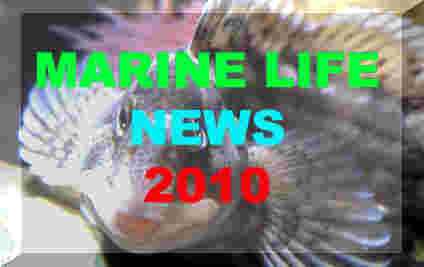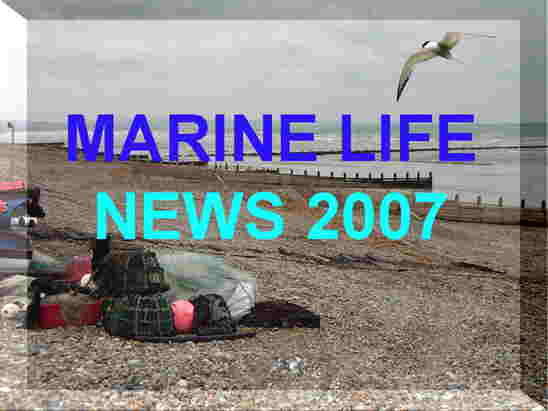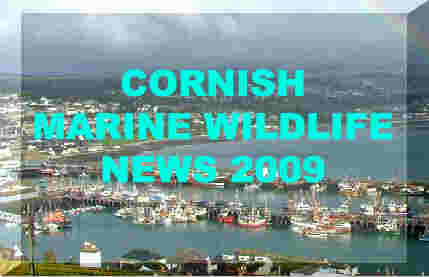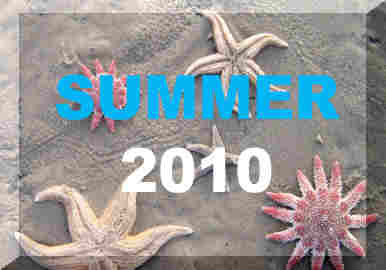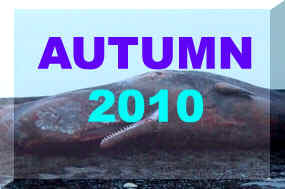EVENTS:

October
2010
Free
lectures: Seas for Life
‘Seas
for Life’: Our oceans, their future and their biodiversity
Birkbeck
Institute of Environment, University of London in conjunction with
the Ecology
and Conservation Studies Society.
Details
of the Lecture Programme (Link)
LATEST
NEWS:
19
December 2010
I
counted 33 Grey Triggerfish,
Balistes
capriscus, washed up on a half mile stretch
of beach across Porth
Kidney Sands, Lelant, Cornwall,
12
December 2010
23
mature Grey Triggerfish,
Balistes
capriscus, were washed up dead on Porthcurnow
Beach in Cornwall in the afternoon.
BMLSS
Triggerfish 2010
21
November 2010
An
unprecedented stranding of over a hundred jellyfish
Rhizostoma
octopus were discovered on the beach at Formby,
north Liverpool.
"The jellyfish were literally
uncountable - we walked about a mile along the beach and they stretched
the whole way and out of sight. They were all more than 60 cm in diameter.
The previous high tide was accompanied by a moderate
wind but nothing exceptional, and it was not particularly high."
Two
days later, almost all the jellyfish had disappeared with just a few seen
stranded on the shore.
BMLSS
Jellyfsh
MarLIN
Records of Rhizostoma octopus
Guernsey
commercial fisherman Peter Merrien
landed an Atlantic Bonito,
Sarda
sarda, which is a member of the tuna
family, Scombridae. It had a total weight
of 1716 grams, a total length of 53.7 cm and a fork length of 50.8 cm.
18
November 2010
A
Grey
Triggerfish,
Balistes
capriscus, was photographed
washed
up dead on the shore at Ceibwr,
North Pembrokeshire, SW Wales.
BMLSS
Triggerfish 2010
3 November
2010
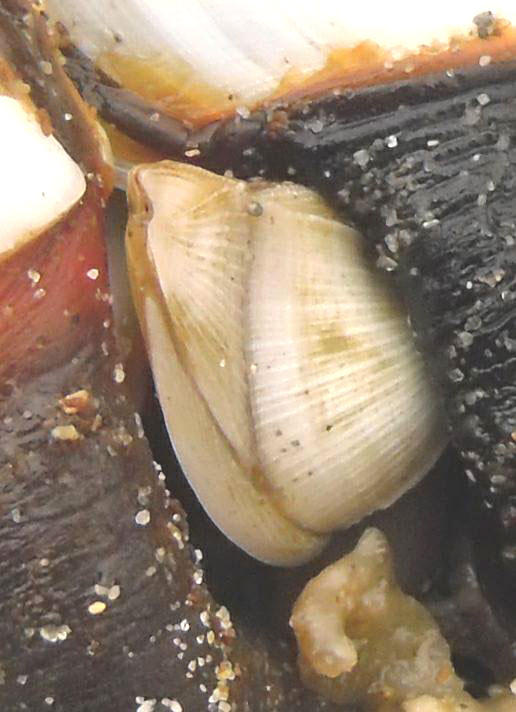 At
least three species of Stalked Barnacles,
Lepas
hilli, Lepas pectinata and
Lepas
anatifera were discovered on the high
tide
mark at Long Rock,
Penzance, Cornwall. Strong south-westerly winds had washed ashore a large
plastic lid that the animals were attached to.
At
least three species of Stalked Barnacles,
Lepas
hilli, Lepas pectinata and
Lepas
anatifera were discovered on the high
tide
mark at Long Rock,
Penzance, Cornwall. Strong south-westerly winds had washed ashore a large
plastic lid that the animals were attached to.
This
is a pelagic tropical-sub-tropical species that is blown to the UK shores
on flotsam via the Gulf Stream. British seas are too cold for these species
to survive and breed.
Stalked
Barnacles on Aphotomarine (by Dave Fenwick)
Barnacles
at Aphotomarine
BMLSS
Barnacles
27-28
October 2010
A
pod of at least 24 Long-finned Pilot Whales,
Globicephala
melas, swam into Loch
Carnon,
South Uist,
Outer
Hebrides, Scotland. It is unusual* for
these cetaceans to swim so close to the eastern shore of the Western Isles.
The increasing narrowness of the loch meant that there was a possibility
of the pod becoming stranded on the shores of the loch, so the Stornoway
Coastguard called in the British
Divers Marine Life Rescue (BDMLR) and other experts.
When
the whales were in danger of heading towards the head of the loch, local
fish farmers took their boats and having formed a ‘U’ shape behind them,
slowly guided them back out past Cornan
Pier where they were safe from stranding in deeper water 400 metres
offshore.
Map
of the Hebridean Seas
Map
of Carnan Pier Area
BMLSS
Cetaceans
(*
There are historic records of up to Pilot
Whales stranded dead in narrow Scottish lochs,
notably in the narrow Clachan
Sound where 192 Pilot Whales were
stranded in 1837.)
Postscript:
The whales did return to sea but 35+ whales, thought to be the same group,
were discovered
dead on a Rutland
Island beach and nearby in County
Donegal, Ireland, on 7 November 2010.
Images
of the dead Pilot Whales
16
October 2010
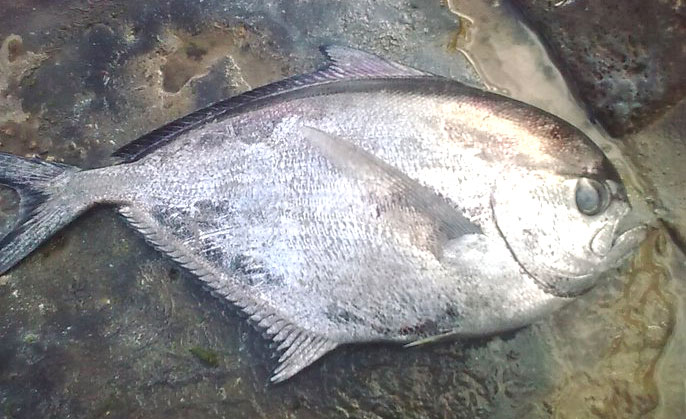
A Ray's
Bream,
Brama
brama, swam ashore at Immingham
Wall at Bay 28 on the River
Humber just before high tide at
1:30 pm. This was the first report received
for the colder months of 2010.
15
October 2010
Gary
Crane received a shock when he landed a 4.95
kg (10 lb 14 oz 11 dram) female Marbled
Electric Ray, Torpedo
marmorata,
on
Richard
Seager’s ‘Out of Blue‘,
while fishing about three miles to the east of Sark,
Channel Islands in the English Channel. The electric
ray had a total length of 58.6 cm and a disc
width of 41.5 cm. It took a whole Black
Bream, Spondyliosoma cantharus,
presented as bait.
BMLSS
Sharks & Rays
BMLSS
Angling Records Links page
BMLSS
Sharks & Ray News
6
October 2010
An
unusual sighting of six, possibly seven Sperm Whales, Physeter
macrocephalus, were spotted by Sea
Watch Regional Coordinator, Alan Airey at
Burghead
looking out to the Moray
Firth.
Alan
spotted the mammals with his scope originally six kilometres offshore but
the animals came within three kilometres of the coast and could be seen
with the naked eye. These animals were spotted just before midday and stayed
in area for most of the day.
3 October
2010
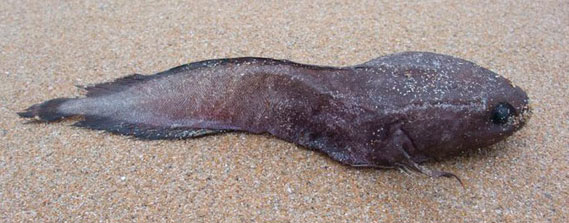
A
Tadpole
Fish, Raniceps
raninus, was discovered washed up
at
Freshwater
West Beach, Pembrokeshire.

British
Marine Life News 2009
Cornish
Marine Life Records 2009 (Ray Dennis Records)
BMLSS
Oil Disasters page


